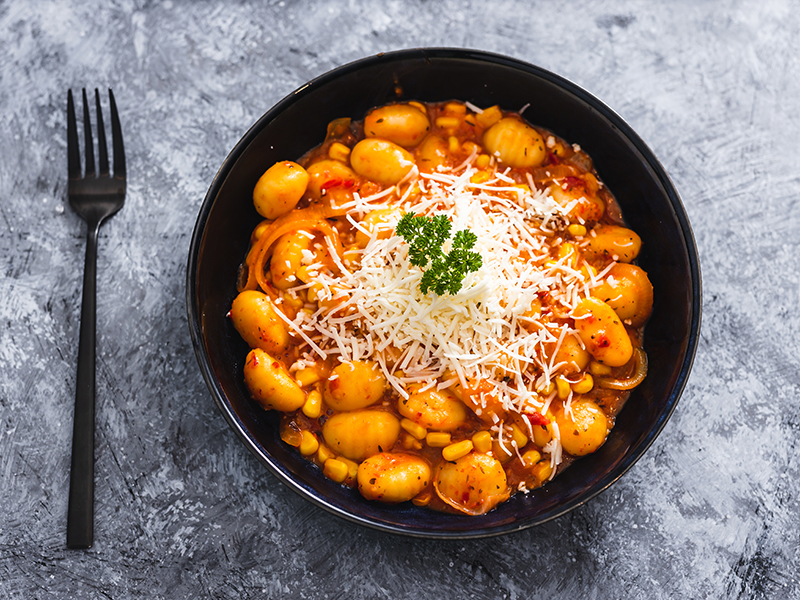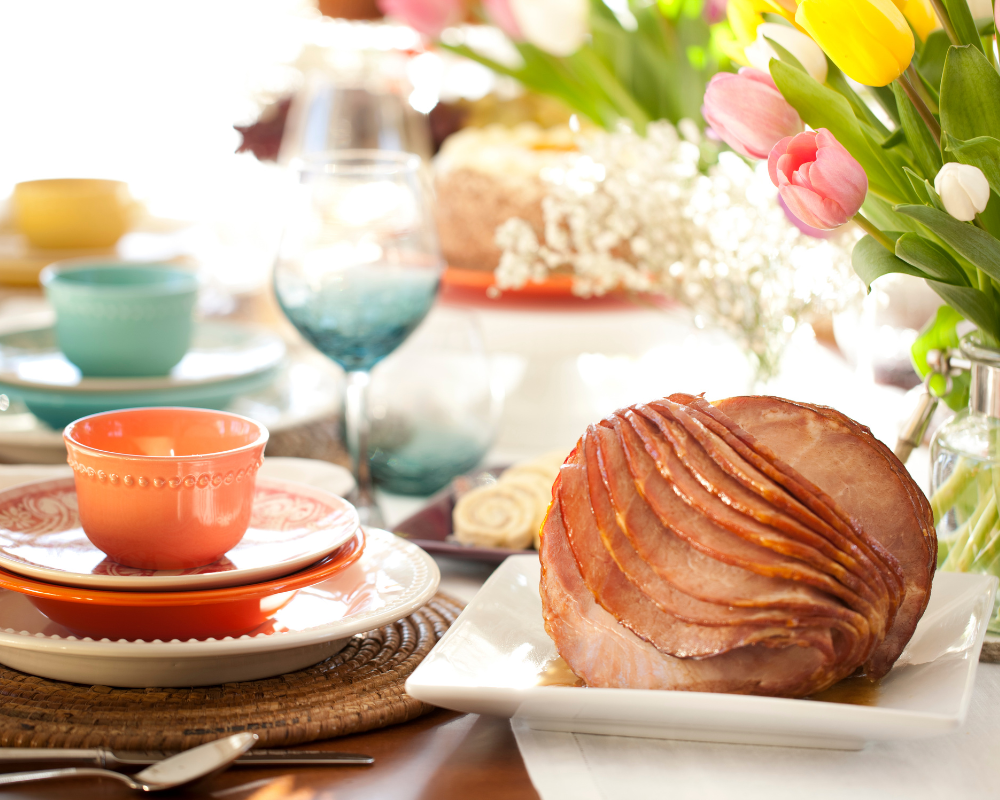Potato Gnocchi
- 2# russet or Yukon potatoes, peeled and cut into uniform size, stored in water
- 1/4 cup Parmesan cheese, plus extra for garnish
- 2-3 eggs
- 3 cups plus, All-Purpose flour
- 1 Tablespoon plus, Kosher salt
- 1 small bunch of asparagus
- 1 lemon, ¼ cup butter
- 1 cup fresh mozzarella cheese
- 2 tablespoons tarragon leaves
To cook the potatoes: Peel the potatoes, leaving no brown spots, and cut them into 2- inch uniform pieces. Place in a 3-quart pot and cover with cold water and 2 Tablespoons of salt. Bring to a boil and then immediately turn down to a low simmer until potatoes are tender but not falling apart. It is important that the potatoes are not over boiled because that gets them waterlogged. Drain the cooked potatoes well and immediately place half in the ricer fitted with the finest disk. Place the ricer on top of a medium bowl and rice the potatoes, rotating the handle 5 turns clockwise then 5 turns counterclockwise until all the potatoes are through. Repeat with the other half of the potatoes. Use a rubber spatula to remove the riced potato hanging from the bottom of the ricer.
To make the gnocchi: Place the riced potatoes onto a large, dry work surface and form into a volcano shape, creating a large well in the center. Crack the eggs into a bowl and mix with a fork. Pour the egg into the well of the potato. Sprinkle the cheese, 1 tablespoon salt, and 1 cup of flour around the outside of the potato “volcano”. Use a fork to slowly incorporate the egg into the potato, gently stirring until it is a paste-like consistency. Using your hands, begin to incorporate the paste into the rest of the mixture, scooping the flour from the outsides. Knead gently a few times until it comes together in a light, almost billowy mass and is moist but not tacky. Gently press your fingertip into the dough. It should bounce back. If it doesn’t, knead in a little more flour, a spoonful at a time. Be sure not to add too much flour or over-knead your dough as that will make the gnocchi dense and chewy.
Dust a half sheet pan lightly with flour. Divide the dough into 10 equal portions. Lightly flour the work surface again, and set a dough portion on it. Using your palms and working from the center of the dough to the outside, roll the dough into a uniform log 1 inch in diameter. Cut the log into 1-inch pieces and transfer them to the prepared pan.
Before continuing with the rest of the dough test the few you have already rolled to be sure they are the proper consistency and flavor. Bring 3 cups of salted water to a boil and add a few gnocchi. The water should be at a medium simmer with bubbles but not a rapid boil. Cook for 3-4 minutes and remove with a slotted spoon. Taste your gnocchi! They should be pillowed in texture and flavorful. If they are falling apart in the water, you may need to add more flour to the dough. When you are satisfied with your test batch repeat with the remaining dough portions. You should have 60 to 70 gnocchi. At this point, all the gnocchi will keep in the refrigerator for up to 1 day, or they can be frozen on the sheet pan, transferred to resealable plastic bags, and stored in the freezer for up to 1 month; to cook from frozen, boil them for 4 to 5 minutes.





